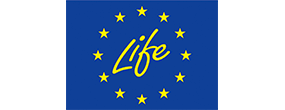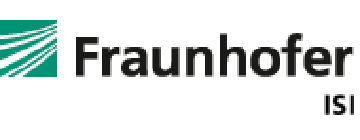Overview
In 2022, the final energy consumption in the Republic of Serbia amounted to 9.6 Mtoe , which is 43% more than in 2000. The largest share in the final energy consumption in 2022 was achieved by the household sector (37%). The transport sector with its share of almost 28% has taken second place from industry, which is now third with 23%. These three sectors are followed by services (10.5%) and agriculture (1.5%). Compared to 2000, there was an increase in final consumption in all sectors; in some sectors this increase is significant. The share of the transport sector has more than doubled, with consumption being more than three times higher in 2022 than in 2000. The shares in the services and agricultural sectors are just slightly higher now, while the share of industry sector decreased by 7.4 points. The largest decline in share is recorded in the household sector (-9.3 points).
Figure 1: Final energy consumption by sector (with climatic corrections)
Source: ODYSSEEIn the period from 2000 to 2022, energy efficiency of final consumers, as measured by ODEX, improved by 15.5%. Energy efficiency improved in all sectors, except in the transport sector. The largest gains were recorded in the industry sector (22%).
Figure 2: Technical Energy Efficiency Index
Source: ODYSSEEVarious awareness-raising activities will be organized with the aim to enhance the existing level of knowledge of all end-users. Priority should be given also to the substitution of inefficient appliances and technologies with new energy efficient ones, along with the effective application of energy labelling and eco-design directives.
The implementation of energy audits and the development of energy management systems in all end-use sectors including non-SMEs and households will be fostered. The smooth and efficient application of green public procurement procedures will be ensured, while the energy efficiency in street lighting by installing energy efficient luminaries will continue to be improved through specialized financial support schemes from public funds, in addition to the energy performance contracts.
The promotion of energy efficiency in the water sector will be assisted, focusing on the examination of the energy-water nexus, the implementation of water management techniques, the installation of water-efficient end-use equipment and the conduction of other energy conservation measures in compliance with the Principle "Energy efficiency first".
The technical and administrative capacity of the involved policy makers will be reinforced in order to facilitate the effective design, implementation, monitoring and evaluation of the energy efficiency measures through specialized trainings, sophisticated tools and materials.
Table 1: Sample of cross-cutting measures
| Measures | NECP measures | Description | Expected savings, impact evaluation | More information available |
|---|---|---|---|---|
| Promotion of energy services and energy performance contracts through targeted financing programs | Yes | The measure will promote energy services through targeted financing programs in specific final energy consumption sectors. Specifically, energy efficiency projects will be implemented through energy performance contracts in industrial and commercial sector. Consequently, specialized financing mechanisms will be applied, such as the provision of low interest loans or guarantees to energy service providers in order to facilitate the smooth access to financing. Moreover, targeted pilot projects will be designed for the renovation of the public buildings for which the application of agreement models prescribed by the Law on Energy Efficiency and Rational Use of Energy is mandatory, with the aim to create the required conditions for the promotion of energy services in the public sector. Finally, the energy upgrade of the street lighting can be achieved also through the provision of energy services. | Contribution to all final energy consumption measures | Link |
| Promotion of energy services and energy services contracts through supplementary activities | Yes | The measure will create a holistic framework for the promotion of energy services removing the potential barriers. Firstly, the existing standard contracts will be promoted, while targeted guidelines will be developed in order to facilitate the design and implementation of energy efficiency projects through Energy Service Contracts. The implementation of the new rulebook on contract models and the rulebook on minimum requirements for buildings applying the contract on efficient energy supply will be fostered according to the provisions of Articles 43-47 of the Law on Energy Efficiency and Rational Use of Energy. The implementation of technical training programs and the provision of technical assistance will familiarize the involved parties leading to successful case studies. The existing public procurement procedures will be applied, while the existing legislative framework will be improved so as to become more effective. Finally, different authorities will be appointed for i) monitoring the legislation on energy performance contracts, ensuring the eradication of potential market barriers, ii) undertaking the role of an independent mechanism, such as an ombudsman for the efficient handling of complaints and out-of-court settlement of disputes arising from energy service contracts and iii) undertaking the role of an independent market intermediary in order to stimulate the market development on the demand and supply sides. | Contribution to measures related to energy efficiency in buildings | Link |
| Mandatory conduction of energy audits and development of energy management systems | Yes | The measure will foresee the continuation of the mandatory development of energy management systems (EMS) and the carrying out of energy audits to the obligated parties for Energy Management System (e.g. big energy consumers from industrial and commercial sector, as well as public sector). The potential expansion of the measure to additional designated parties will be scrutinized, including the application of Directive (EU) 2012/27 requirements in regards to the energy audits implementation. The aim of the measure is the identification of the most cost-effective energy efficiency interventions, while their financing will be aligned with the planned support scheme. In the following period, obligated EMS parties will be obliged to appoint the required number of energy managers and plan/implement measures to reduce energy consumption in accordance with the requirements set by the Government, as well as to report to the Ministry on the implemented measures. If necessary, in the coming period the regulatory framework for the implementation of the Energy Management System will be improved. In order to monitor the implementation of measures, the Ministry of Mining and Energy will ensure the operation of the necessary information systems. Finally, the appointment of energy managers will be mandatory for the public and municipal buildings, which will, among other duties, monitor final energy consumption, the identification of the most cost-effective energy efficiency interventions, the surveillance of the implemented works for the energy renovation of the buildings and the development of energy management systems. | Contribution to fulfilling the expected final energy consumption levels | Link |
| Promotion of energy-efficient products through the implementation of energy labelling and eco-design Directives | Yes | The measure will ensure the effective implementation of energy labelling and eco-design Directives. It is necessary to strengthen the capacity of the institutions responsible for market monitoring, which are the implementing entities for the current measure. It is also necessary to strengthen the capacity of conformity assessment bodies and conduct promotional and educational campaigns for all interested parties, including the general public. | Contribution to measures related to energy efficiency in buildings and promotion of energy efficient passenger and light-duty vehicles | Link |
Buildings
Energy consumption of household space heating (normal climate) varied over the period 2000-2022. The last two years are almost identical with consumption of 0.92 toe/dw, which represents a level 14% higher than in 2000 (.0.81 toe/dw). For the other households end-uses (i.e. apart from heating), the following trends are observed: the amount of energy intended for cooking is almost constant (about 0.1 toe/dw); the energy required for water heating has been constantly decreasing over time at an annual rate of about 1% (ie -22% during the observed period, from 0.2 toe/dw to 0.15 toe/dw). More widespread use of air conditioners was recorded in 2010 and since then it has been in the range of 0.005-0.006 toe/dw. A significant decrease in consumption, from 0.25 toe/dw to 0.19 toe/dw (-24%), is recorded by lighting and other electrical appliances; this is a consequence of the use of LEDs and more efficient small appliances, as well as changes in the behavior of people, who are now taking more care about energy efficiency in households than they used to do 10 and 20 years ago.
Figure 3: Energy consumption per dwelling for space heating (with climatic corrections)
Source: ODYSSEEFigure 4: Energy consumption per dwelling by end-use (except space heating)
Source: ODYSSEEIn 2022, the final energy consumption in the household sector was 0.3 Mtoe higher (almost 10%) than in 2000. Several factors contributed to raise consumption, among which the increase in appliances ownership (i.e. “more appliances per dwelling”) had a major role in this increase (+1.89 Mtoe). More and larger dwellings also contributed to an increase in energy consumption (+0.71 Mtoe). Energy savings reduced consumption by 0.7 Mtoe, while climate and other effects also contributed to a decrease the final consumption in households by 0.21 Mtoe and 1.4 Mtoe, respectively; other effects correspond to the behavioral changes mentioned previously.
Figure 5: Main drivers of the energy consumption variation in households
Source: ODYSSEEFrom 2010 to 2022, energy consumption per employee decreased by 3.6%, or an average by 0.3% annually. Electricity consumption recorded a more significant decrease, 9.7% for the entire period, or 0.9% annually.
Figure 6: Energy and electricity consumption per employee in services (with climatic corrections)
Source: ODYSSEEA well-balanced mixture of policy measures, financing, fiscal and regulatory, will be implemented in order to support the energy renovation of the building stock and to attain the specified renovation rate. All the planned measures will be systematized in the Long-Term Strategy for Encouraging Investment in the Renovation of the National Buildings Fund of the Republic of Serbia until 2050, and are intended for residential and non-residential buildings, both public and private.
Financial support will be provided for fostering the improvement of energy performance and energy modernization of the residential and non-residential buildings. Further, the consistency and compliance of the legislative framework with the provisions of the Directive 2018/844/EU, respectively EPBD 2010/31/EU will be ensured, whereby the minimum requirements will be incorporated in the Energy Performance of Building Directive in order to increase the number of near-zero energy buildings. The inspections of the heating and air-conditioning systems will be conducted according to the respective provisions.
Finally, the role of the Energy Performance Building Certificates will be enhanced aiming at their transformation into renovation passports so as to fully aligned with the provisions of the revised Directive 2018/844/EU and to facilitate the implementation of the most cost-effective interventions.
Table 2: Sample of policies and measures implemented in the building sector
| Measures | NECP measures | Description | Expected savings, impact evaluation | More information available |
|---|---|---|---|---|
| Financial support for energy rehabilitation of residential buildings | Yes | The measure will provide subsidies for the energy renovation of the existing residential buildings. The design and provision of the dedicated financial incentives will facilitate the more extensive energy renovation of the residential buildings through the rehabilitation of the building envelope and technical systems attaining the optimum cost-effectiveness ratio and increasing the share of the own funds, which will be utilized. Emphasis will be given on the promotion of heat pumps through specialized actions. Additional financial and fiscal measures will be initiated, such as the adoption of targeted tax deductions, credit lines and soft-interest loans in the case that the contribution of the planned subsidies is not sufficient. Special focus will be given on the energy renovation of the buildings in the Just Transition areas. The planned measure will also be utilized so as to combat energy poverty. | 131 thousand energy-renovated residential buildings (final energy savings 35 ktoe delivered by interventions in the building envelope) ▪ 14.3 million m2 of energy-renovated residential buildings ▪ 2 GWth new capacity of heat pumps (final energy savings 34 ktoe) | Link |
| Financial support for the energy renovation of public buildings | Yes | The measure will provide subsidies for the energy renovation of the existing residential buildings. The design and will promote the energy renovation of the public buildings, highlighting the exemplary role of the public sector. The most cost-effective interventions will be supported for the rehabilitation of the building envelope and technical systems attaining the optimum cost-effectiveness ratio as prioritized within the framework of the energy management systems, which will be developed by the responsible authorities in accordance with the Law on Energy Efficiency and Rational Use of Energy. The achievement of the target for the energy renovation of buildings owned and used by the central administration (central government buildings – CGB) of 3% annually will be achieved with the most cost-effective approach, while the potentially more ambitious targets, related to the renovation of the specific percentage of heated and cooled state-owned buildings used by the public administration will be examined. Special focus will be given on the energy renovation of the buildings in the Just Transition areas. | 1,206 thousand m2 energy-renovated public buildings (final energy savings 5 ktoe delivered by interventions in the building envelope) ▪ 1.3 GWth new capacity of heat pumps (final energy savings 27 ktoe) | Link |
| Financial support for the energy renovation of non-residential buildings (not public) | Yes | The measure will foresee the provision of subsidies for the energy renovation of non-residential buildings, with the exemption of public buildings, emphasising on the reduction of the heating and cooling demand in the service sector. The design and provision of dedicated financial incentives will enable more extensive energy rehabilitation of non-residential buildings through cost-optimal interventions to improve the energy efficiency of buildings and technical systems with the highest potential for energy savings. Additional financial and fiscal measures will be initiated, such as the adoption of targeted tax deductions and the unhampered access to the required funds through credit lines, guarantees and soft-interest loans in the case that the contribution of the planned subsidies is not sufficient. Special focus will be given on the energy renovation of the buildings in the Just Transition areas. | 7,681 thousand m2 energy-renovated non-residential buildings (final energy savings 32 ktoe delivered by interventions in the building envelope) ▪ 3.8 GWth new capacity of heat pumps (final energy savings 25 ktoe) | Link |
| Completion of legislative framework in alignment with Directive 2018/844/EU and regulatory measures to promote nearly-zero energy buildings (nZEBs) | Yes | The measure will ensure the coherence and compliance of the legislative framework with the provision of the Directive (EU) 2018/844. The minimum requirements will be incorporated in the laws and by-laws regulating the Energy Performance of Buildings, thus increasing the number of nearly-zero energy buildings. The inspections of the heating and air-conditioning systems will be conducted according to the respective provisions adopted on the basis of the Law on Energy Efficiency and Rational Use of Energy. Moreover, the adoption of specific regulatory measures will be scrutinized through the examination of different alternatives such as, for example: i) where applicable, buildings that house public authorities should be renovated to achieve the best possible energy class of the building energy performance certificate, ii) all new buildings or building units rented or purchased by central government bodies should be nearly-zero energy buildings, taking into the account the availability and the rental price of such buildings at the market and iii) the mandatory installation of specific technologies in new buildings (such as heat pumps, solar thermal system) and those undergoing major renovation as defined in Directive 2010/31/EU. | Contribution to other measures related to energy efficiency in buildings | Link |
| Installation of solar thermal systems in new buildings and in buildings undergoing extensive energy renovation | Yes | The measure will facilitate the installation of solar thermal systems in new buildings and those undergoing major renovation, as defined in Directive 2010/31/EU, facilitating simultaneously the further deployment of renewable energy. The planned measure will also be used to combat energy poverty. | 1.8 GW capacity of solar thermal systems (primary energy savings 41 ktoe) | Link |
Transport
The transport sector is dominated by road transport, covering 98% of total consumption in 2022 (which is identical to year 2000). The consumption of rail transport has increased by 158% during this period, but it still accounts for only 1.7% of consumption. Domestic air traffic does not exist in the Republic of Serbia.
Figure 7: Transport energy consumption by mode
Source: ODYSSEEIn the Republic of Serbia in 2022, 84% of passenger traffic was carried out by cars, and 12% by buses. Railway traffic only represented by 4%. In 2010, the situation was almost identical.
Figure 8: Modal split of inland passenger traffic
Source: ODYSSEEIn 2022, road freight transport participated with 69% of the total freight traffic in the Republic of Serbia, while in 2010 this share was only 28%. In the same period, water transport share decreased - from 14.4% to 11%. The share of rail freight transport decreased strongly, by 38 points, from 58% in 2000 to 20% in 2022.
Figure 9: Modal split of inland freight traffic
Source: ODYSSEEEnergy consumption in transport in 2022 was 3.4 times higher than in 2000. Both passenger and freight traffic have increased, with no energy savings that could moderate that increase to a certain extent, and a significant impact of “modal shift” (i.e. higher share of road transport), which contributed almost 3 times more to the consumption increase than the growth in traffic (“activity”) (1.4 Mtoe and 0.5 Mtoe, respectively).
Figure 10: Main drivers of the energy consumption variation in transport
Source: ODYSSEEThe promotion of energy efficient vehicles through the provision of specific tax advantages will be the main instrument for increasing the energy efficiency in the transport sector. In the case that the fiscal measures are not sufficient to the fulfilment of the established targets, financial incentives will be provided to end-users so as to foster considerably the replacement of the conventional vehicles with new energy efficient ones. Priority will be given on the promotion of energy efficiency of the freight transport with initiatives, such as the replacement of the vehicle fleets and the facilitation of the modal shift to other means of transport. Furthermore, the promotion of alternative fuels will be supported with the development of the required infrastructure for all the promoted types of alternative fuels maximizing the synergies with the policy measures, which have been integrated into the RES dimension.
Table 3: Sample of policies and measures implemented in the transport sector
| Measures | NECP measures | Description | Expected savings, impact evaluation | More information available |
|---|---|---|---|---|
| Promotion of energy efficient passenger and light-duty vehicles | Yes | The measure will be targeted at the promotion of energy efficiency in transport sector through the compliance with the Regulation (EU) 2019/631 which sets emission performance standards for new passenger cars and new light commercial vehicles. Moreover, the promotion of energy efficient vehicles will also be achieved through the provision of specific tax advantages for the stimulation of purchasing energy efficient vehicles, including the vehicles that consume alternative fuels. The taxation framework of the transport sector will be streamlined by selecting the most effective forms of tax in order to balance the total cost of ownership and to promote the energy efficiency of vehicles and the use of low-emission fuels. The most effective form of taxation will be selected based on the results of the assessment of various types, such as the introduction of vehicle excise duty based on CО2 emissions, the vehicle circulation tax, the excise tax on road transport fuels exceeding the minimum levels as required in Directive 2003/96/EC, the establishment of road charges for heavy-duty vehicles etc. | 102.1 thousand gasoline and hybrid passenger vehicles (final energy savings 54 ktoe) | Link |
| Financing programs for the promotion of energy efficient passenger vehicles | Yes | The measure will provide subsidies for the purchase of energy efficient passenger vehicles so as to replace conventional ones in the case that the fiscal measures are not sufficient to the fulfilment of the established targets. The provided subsidies will consider as eligible the vehicles that consume alternative fuels. | 20.5 thousand electric vehicles (final energy savings 9 ktoe) | Link |
| Development of the required infrastructure for the promotion of alternative fuels | Yes | The measure will promote the further penetration of alternative fuels with the development of the required infrastructure, in accordance with the provisions of Directive 2014/94/EU. Especially for the case of electromobility, an electrification action plan for passenger and freight transport, roads and infrastructure will be compiled, emphasizing also the development of the legal framework and the exploitation of various financial instruments. | Contribution to all measures related to promotion of energy efficient vehicles | Link |
| Promotion of modal shift both for passenger and freight transport - Enabling ‘Mobility as a Service’ (MaaS) | Yes | The measure will foresee the development of a holistic framework for the promotion of modal shift both for passenger and freight transport. A dedicated action plan will be compiled facilitating the implementation of integrated modal shift measures and enabling ‘Mobility as a Service’ (MaaS) with the exploitation of the available data, the information and communication technologies and artificial intelligence for smarter mobility. Moreover, measures will be implemented for increasing significantly the proportion of cyclists and improving the conditions for walking, including the development of the required infrastructure. Finally, the provision of carpooling and car sharing services will be also promoted. | Contribution to all measures related to promotion of energy efficient vehicles | Link |
Industry
Final energy consumption in the industrial sector in 2022 amounted to 2.2 Mtoe (8.4% more than in 2000, but 5.2% less than 2010). Most of this consumption in 2022 was concentrated in four branches of industry: non-metallic mineral products (18% of total energy consumption in industry), food, beverages and tobacco manufacturing (18% as well), steel industry (16%) and chemical industry (14%).
Figure 11: Final energy consumption of industry by branch
Source: ODYSSEEIn 2022, steel production records a 17% drop in the energy needed to produce one ton of crude steel comparing to year 2008, while the paper and pulp industry uses 26% more energy per ton of products.
Figure 12: Unit consumption of energy‐intensive products (toe/t)
Source: ODYSSEEConsumption in the industrial sector increased by 0.18 Mtoe, from 2.04 Mtoe in 2000 to 2.22 Mtoe in 2022. The growth in industrial activity contributed to increase consumption by 1.15 Mtoe, while energy savings, changes in structure and some other factors contributed to the reduction of consumption by a total of 0.97 Mtoe, partially reducing the overall increase.
Figure 13: Main drivers of the energy consumption variation in industry
Source: ODYSSEESupport schemes will be designed for the implementation of energy efficiency projects in the industrial sector by combining various financial instruments, such as direct financial support, low interest loans, tax deductions, credit lines and guarantees.
Various supplementary actions will be implemented through the provision of financial and fiscal incentives in order to promote the energy efficiency in industrial sector. The further exploitation of renewables for electricity, heating and cooling production and the promotion of other alternative fuels will contribute to the improvement of energy efficiency.
Table 4: Sample of policies and measures implemented in the industry sector
| Measures | NECP measures | Description | Expected savings, impact evaluation | More information available |
|---|---|---|---|---|
| Regulatory measures for the promotion of energy efficiency in industrial sector | Yes | Measure will facilitate the further deployment of the best available technologies in compliance with the respective legislation (Industrial Emission Directive), while the development of the appropriate monitoring and surveillance mechanism will be considered as a vital prerequisite for the implementation of the measure. Moreover, the application of the eco-design requirements will ensure the penetration of energy efficient technologies and equipment. The measure must be in correlation with "Mandatory conduction of energy audits and development of energy management systems". | Contribution to fulfilling the expected final energy consumption levels in the industrial sector | Link |
| Support schemes for the promotion of energy efficiency in industrial sector | Yes | Measure will initiate a targeted support scheme for the implementation of energy efficiency projects in industrial sector combining various financial and fiscal instruments, such as direct financial support, low-interest loans, tax deductions, credit lines and guarantees. The implementation of the measure is linked also with measure "Mandatory conduction of energy audits and development of energy management systems", which foresees the mandatory conduction of energy audits and development of energy management systems in order to identify the most cost-effective energy efficiency interventions for being supported economically. | Contribution to fulfilling the expected final energy consumption levels in the industrial sector | Link |
| Supplementary actions for the promotion of energy efficiency in industrial sector | Yes | Measure will boost the implementation of various measures for the promotion of energy efficiency in industrial sector such as the establishment of industrial-business zones served by centralized CHP and central heat generation and distribution systems, the deployment of cogeneration systems, the promotion of circular economy including the exploitation of waste heat and the extended digitalization of the industrial processes. The further exploitation of renewables for electricity, heating and cooling production and the promotion of other alternative fuels will contribute to the improvement of energy efficiency maximizing the synergies with the RES dimension. The promotion of the planned interventions will be achieved either through the development of the appropriate infrastructure or the provision of financial and fiscal incentives. | Contribution to fulfilling the expected final energy consumption levels in the industrial sector | Link |





